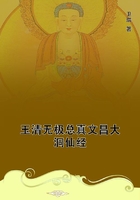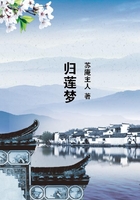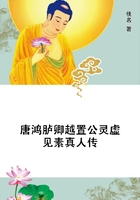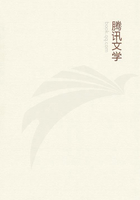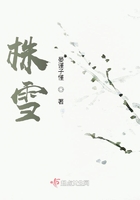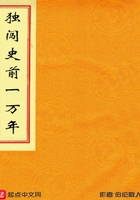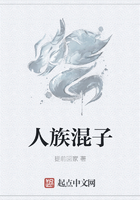This mixed construction tells us that the rustic stacker of wooden beams excels, when occasion offers, in making elegant shell pavements and that it practices rough carpentry and delicate mosaic work indifferently. In the latter instance, the scabbard is made, above all, of Planorbes, selected among the smaller of these pond snails and laid flat. Without being scrupulously regular, the work, at its best, does not lack merit. The pretty, close-whorled spirals, placed one against the other on the same level, have a very pleasing general effect. No pilgrim returning from Santiago de Compostella ever slung handsomer tippet from his shoulders.
But only too often the caddis worm dashes ahead, regardless of proportion. The big is joined to the small, the exaggerated suddenly stands out, to the great detriment of order. Side by side with tiny Planorbes, each at most the size of a lentil, others are fixed as large as one's fingernail; and these cannot possibly be fitted in correctly. They overlap the regular parts and spoil their finish.
To crown the disorder, the caddis worm adds to the flat spirals any dead shell that comes handy, without distinction of species, provided it be not excessively large. I notice, in its collection of bric-a-brac, the Physa, the Paludina, the Limnaea, the Amber snail [all pond snails] and even the Pisidium [a bivalve], that little twin-valved casket.
Land shells, swept into the ditches by the rains after the inmate's death, are accepted quite as readily. In the work made of the Mollusk's cast-off clothing, I find encrusted the spindle shell of the Clausilium, the key shell of the pupa, the spiral of the smaller Helix, the yawning volute of the Vitrina, or glass snail, the turret shell of the Bulimus [all land snails], denizens all of the fields. In short, the caddis worm builds with more or less everything that comes from the plant or the dead mollusk. Among the diversified refuse of the pond, the only materials rejected are those of a gravelly nature. Stone and pebble are excluded from the building with a care that is very rarely absent. This is a question of hydrostatics to which we will return presently. For the moment, let us try to follow the construction of the scabbard.
In a tumbler small enough to allow of easy and precise observation, I install three or four caddis worms, extracted this moment from their sheaths with every possible precaution. After a number of attempts which have at last shown me the right road, I place at their disposal two kinds of materials, possessing opposite qualities; the supple and the firm, the soft and the hard. On the one hand, we have a live aquatic plant, such as watercress, for instance, or ombrelle d'eau, having at its base a tufty bunch of fine white roots about as thick as a horsehair. In these soft tresses, the caddis worm, which observes a vegetarian diet, will find at one and the same time the wherewithal to build and eat. On the other hand, we have a little faggot of bits of wood, very dry, equal in length and each possessing the thickness of a good sized pin. The two sorts of building material lie side by side, mingling their threads and sticks. The animal can make its choice from the lump.
A few hours later, having recovered from the shock of losing its sheath, the caddis worm sets to work to manufacture a new one. It settles across a bunch of tangled rootlets, which are brought together by the builder's legs and more or less arranged by the undulating movement of the hinder part. This gives a kind of incoherent and ill defined suspended belt, a narrow hammock with a number of loose catches; for the various bits of which it is made up are respected by the teeth and extended from place to place beyond the main cords of the roots. Here, without much trouble, is the support, suitably fixed by natural moorings. A few threads of silk, casually distributed, make the frail combination a trifle more secure.
And now to the work of building. Supported by the suspended belt, the caddis worm stretches itself and thrusts out its middle legs, which, being longer than the others, are the grapnels intended to seize things at a distance. It meets a bit of root, fastens on to it, climbs above the point gripped, as though it were measuring the piece to a requisite length, and then, with the fine scissors of its mandibles, cuts the string.
There is at once a brief recoil, which brings the animal back to the level of the hammock. The bit detached lies across the worm's chest, held in its forelegs, which turn it, twist it, wave it about, lay it down, lift it up, as though trying for the best position. Those forelegs make admirably dexterous arms. Being less long than the other two pairs, they are brought into immediate contact with those primordial implements, the mandibles and the spinneret. Their delicate terminal jointing, with a movable and crooked finger, is the caddis worm's equivalent of our hand. They are the working legs. The second pair, which are exceptionally long, serve to spear distant materials and to give the worker a firm footing when measuring a piece and cutting it with the pliers.
Lastly, the hind legs, of medium length, afford a support when the others are busy.
The caddis worm, I was saying, with the piece which it has removed held crosswise to its chest, retreats a little way along its suspended hammock until the spinneret is level with the support furnished by the close tangle of rootlets. With a quick movement, it shifts its burden, gets it as nearly by the middle as it can, so that the two ends stick out equally on either side, and chooses the spot to place it, whereupon the spinneret sets to work at once, while the little fore legs hold the scrap of root motionless in its transversal position. The soldering is effected with a touch of silk in the middle of the bit and along a certain distance to the right and left, as far as the bending of the head permits.

